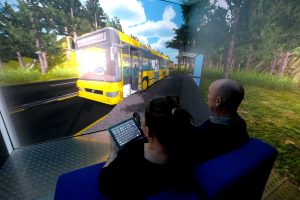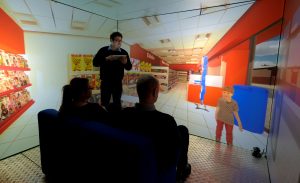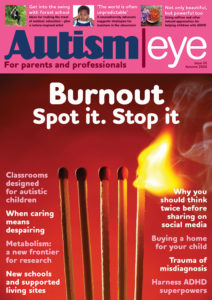Children with autism who struggle with phobias are now able to have treatment on the NHS in a virtual reality room.
Sessions help children overcome fears connected to everything from shopping to getting on a bus or crossing a bridge. The therapy takes place in a facility called the Blue Room, in Consett, County Durham.

Alternative reality: a user of the Blue Room, accompanied by a psychologist, experiences catching a bus
Images representing the ‘real world’ surround the child in the room. A psychologist accompanies the child while the therapy is taking place.
This ‘immersive’ approach is favoured over getting children with autism to wear virtual reality headsets or goggles, which some find distressing.
Personalised scenarios target individual phobias
A team of researchers from Newcastle University worked with the company Third Eye Technologies to create personalised scenarios to target individual phobias.
In 2014, the Newcastle team reported how eight out of nine children treated in the Blue Room could tackle the situation they feared. They published their findings in the PLOS ONE online scientific journal.
Some completely overcame their phobias, even a year later.

Shopping experience: users of the Blue Room can use iPad controls to move around the scene
Dr Jeremy Parr, a senior lecturer in Paediatric Neurodisability at Newcastle University, provides this service. He carries out the work within the Northumberland, Tyne and Wear NHS Foundation Trust.
He said: “People with autism can find imagining a scene difficult, so by providing it physically in front of the child’s eyes we can sit alongside them and help them learn how to manage their fears.”
Children fully control the environment
Children move around the scene using iPad controls. They navigate as they wish and fully control the environment.
Scenes can be gradually built up in complexity and noise level. This allows a graded exposure and control that is impossible in real life.
Parr added: “To see children able to face a situation that they previously found so distressing, such as going into a shop, after just four sessions in the treatment room is amazing.”
To examine the long-term effectiveness of the treatment, a larger-scale clinical study is now being carried out. The results are due later this year.
Published: 22 February 2017
















